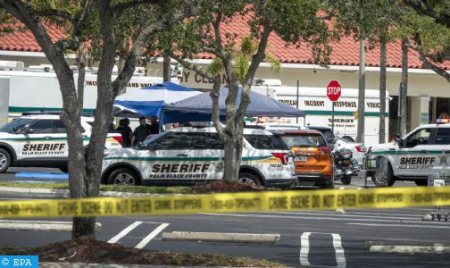Often portrayed romantically in American folklore and songs, the American sheriff has had a featured place in US history and society. A role that arose out of the British common law, sheriffs around the nation are generally responsible for keeping public order and enforcing the law. Over time, however, that role has taken on a distinctly American turn, and become subject to controversy for various excesses and abuses or dereliction of duty.
The modern word “Sheriff” means keeper or chief of the county. It is derived from the Anglo-Saxon words “Shire-Reeve”, a function that dates back to around 871 during the reign of King Alfred the Great of England. Back then, the Shire-Reeve was the guardian of the shire (county). His duties included keeping the peace, collecting taxes, maintaining jails, arresting fugitives, maintaining a list of wanted criminals, and serving orders and writs for the King’s Court. The term evolved, as language does, and some 300 years later in 1215 when King John signed the great document of freedom known as Magna Carta, the duties and the role of the sheriff became more defined.
Although in England sheriffs began to lose their power becoming largely ceremonial by the early 1800s, the American sheriff has continued to play a significant role in US society. Indeed, many of the US’s current laws and legal structures originated during Magna Carta’s unprecedented period of legal reform in England, and most of the original sheriff’s duties remain the foundation of the sheriff’s responsibilities in the US.
The first American sheriff is believed to have been Captain William Stone, who was appointed in 1634 to the Shire of Northampton in the colony of Virginia. The first “Office of the Sheriff” in America was enshrined in Maryland’s original Constitution in 1641, and it remains there today.
Initially sheriffs were appointed to their positions, but with the election of William Waters as first elected sheriff of Northampton in 1652, elected sheriffs became woven into the democratic fabric of US society. In the United States today, of the 3083 sheriffs, approximately 98 percent are elected by the citizens of their counties or parishes.
Early American sheriffs had significant power. Across the frontier to the West, sheriffs administered not only conventional punishments such as prison terms, but also flogging, banishment, and execution by choking.
By the early 1800s, changing notions of public order, driven by economics as well as politics, sparked the relatively modern invention of the police force, according to Gary Potter, a crime historian at Eastern Kentucky University. The first publicly funded, organized police force with officers on duty full-time, for example, was created in Boston, Massachusetts in 1838.
Maintaining public order also became integral to the American institutions of slavery and segregation. In the South, according to Potter, economics drove the creation of police forces that were centered on the preservation of the slavery system. Some of the primary policing institutions were the slave patrols that chased down runaway slaves and brutally put down slave revolts.
The first formal slave patrol was created in the Carolina colonies in 1704. During the Civil War from 1861-1865, the military became the primary form of law enforcement in the South. By Reconstruction from 1863-1867, many local sheriffs functioned in a way analogous to the earlier slave patrols. The sheriffs enforced the segregation laws and the disenfranchisement of freed slaves.
But what does a modern sheriff’s office in the US look like today? Each of America’s 50 states, territories, and tribal reservations is different, so no two sheriff’s offices or jurisdictions are the same. They range in size from the largest in Los Angeles, California with more than 8,200 sworn personnel, to Hidalgo County, Texas, with only 301.
A key feature of the modern elected sheriff is his or her direct accountability to the people. The Office of Sheriff is the independent office through which the Sheriff exercises the powers of the public trust, according to the Sheriff’s association. Elected sheriffs are accountable directly to the constitution of their state, to the United States Constitution and US law, and to the citizens of their county who vote. Other than a few elected town marshals, the sheriff is the only head of a law enforcement agency in the US that is accountable directly to the people in his or her jurisdiction.
Despite the accountability of the ballot box, the power that sheriffs wield means that abuses can and do occur. Accusations of racism and discrimination have been common, and sheriff’s offices have come under fierce criticism over the years in a number of jurisdictions, with citizens demanding accountability and more transparency.
One sheriff who went rogue was Sheriff Joe Arpaio, a son of Italian immigrants, who was in office from 1993-2017 in Maricopa County, Arizona. He became notorious for his extreme measures against illegal immigration, use of racial-profiling, and show-boating a headline-grabbing approach to criminal justice, that included dressing inmates in pink underwear and housing them in an inhumane open air, “tent city” that he referred to as a “concentration camp.” In the blazing 48-degree Celsius Arizona heat, inmates complained of their shoes melting, and the temperature inside the tent measured 63 degrees Celsius.
While he embraced his reputation as “America’s toughest sheriff,” Arpaio’s renegade approach to law enforcement—simply locking people up without probable cause—caused litigation. In 2017, at the age of 85, a judge held him in contempt for his “flagrant disregard” of a 2011 court order that required him to stop detaining people unless they were suspected of a crime. Although former President Donald Trump pardoned him for the crime, much of his remaining political support had been eroded, and he lost his four subsequent runs for office as Sheriff, US Senator, and Mayor.
Calls for accountability have been most notable this year perhaps in Uvalde, Texas, where 19 children and two teachers died in a school shooting in May. According to Uvalde County Commissioner John Yeackle, videos showing officers at the scene seemed to indicate that “no one seemed to know who was in charge.” Parents and others have said that the sheriff department’s inaction for more than 90 minutes cost children’s lives.
County commissioners in Uvalde, Texas, voted this month to launch an independent review into the actions and failure to act of responding sheriff’s deputies during the massacre at Robb Elementary School. Yeackle said the initiative was to ensure that residents would receive a “comprehensive report they can trust” into how sheriff’s deputies performed that day. Nevertheless, on Wednesday the school district’s Board fired the police chief who was the incident commander.
In some counties, the sheriff’s office is supervised by a Citizens’ Law Enforcement Review Board. In San Diego, California, for example, a citizen’s review board found that sheriff’s deputies were slow to respond after a transgender woman was put into a jail cell with three men and attacked by one of the men causing her severe injuries, including a broken jaw. Review board investigators found that “the assault and injury were the result of a systemic failure on the part of [the Sheriff’s Department] exemplified by insufficient policies and procedures.”
While citizen supervisors can act more immediately than the ballot box to address the failings of a sheriff’s department when it fails to meet its responsibilities to the public, for those who are injured or die, justice and accountability often come too late.










